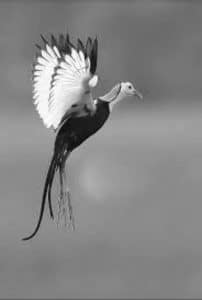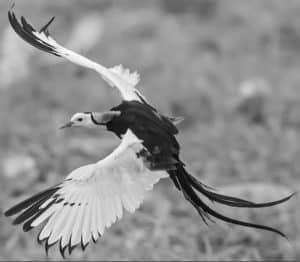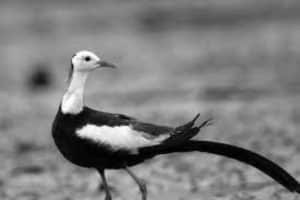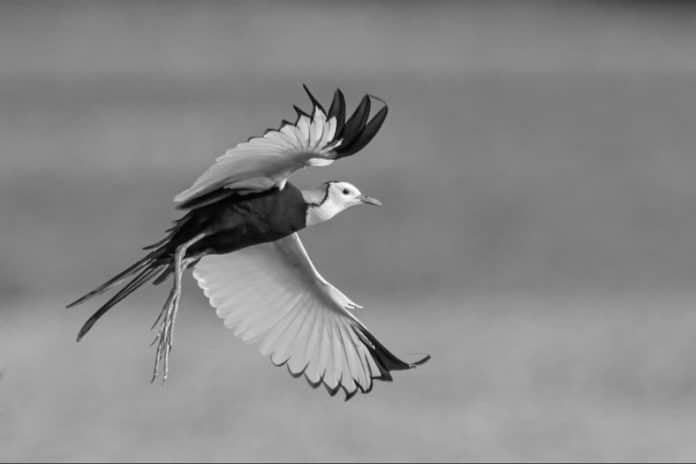Introduction to jacanas in Tanzania
When you think of Tanzania, your mind may conjure up images of vast savannahs, majestic wildlife, and towering mountains. But did you know that Tanzania is also home to a fascinating avian species called jacanas? These graceful birds, known for their long toes and stunning plumage, can be found adorning the country’s waterways. In this article, we will take a closer look at jacanas in Tanzania, exploring their habitat, behavior, and the importance of conserving these avian wonders.
Overview of jacanas

Jacanas are a group of wading birds that belong to the family Jacanidae. Tanzania is fortunate to host several species of jacanas, including the African jacana (Actophilornis africanus) and the lesser jacana (Microparra capensis). These birds are characterized by their long legs and toes, which enable them to walk on floating vegetation and navigate through the dense vegetation of wetlands. With their striking plumage, jacanas are a sight to behold, with vibrant colors ranging from shades of brown to golden hues.
Habitat and distribution of jacanas in Tanzania
Jacanas in Tanzania can be found in a variety of wetland habitats, including lakes, swamps, and riverbanks. They are especially abundant in the Serengeti and Ngorongoro Conservation Areas, as well as in the wetlands surrounding Lake Victoria. These birds prefer areas with abundant aquatic vegetation, as it provides them with both food and shelter. The distribution of jacanas in Tanzania is closely linked to the availability of suitable wetland habitats, and they can often be spotted near the edges of water bodies, delicately treading on lily pads or floating vegetation.
Physical characteristics of jacanas
One of the most distinctive features of jacanas is their long toes, which allow them to walk on floating vegetation without sinking. These remarkable appendages are perfectly adapted for their unique lifestyle, enabling them to navigate through the dense vegetation of wetlands and forage for food. Jacanas also have long, slender bills, which they use to probe the water and mud for insects, small invertebrates, and seeds. Their plumage is equally impressive, with males often displaying vibrant colors and intricate patterns. Females, on the other hand, tend to have more subdued markings, which serve as effective camouflage when nesting.
Behavior and breeding habits of jacanas

Jacanas are highly territorial birds, with males fiercely defending their chosen nesting sites. They are polyandrous, meaning that one female mates with multiple males within her territory. The males take on the majority of parental duties, incubating the eggs and caring for the chicks once they hatch. This unique breeding behavior is thought to be an adaptation to the unpredictable nature of wetland habitats, where resources can be scarce and males play a crucial role in ensuring the survival of their offspring. Jacanas are also known for their loud, distinctive calls, which they use to communicate with each other and establish their territory.
Importance of jacanas in the ecosystem
Jacanas play a vital role in the ecosystem of Tanzania’s wetlands. As they forage for food, they help control insect populations, particularly mosquitoes, which can carry diseases such as malaria. Additionally, their feeding habits contribute to the dispersal of seeds, aiding in the regeneration of wetland vegetation. Jacanas also serve as indicators of the overall health of wetland ecosystems. Their presence or absence can provide valuable insights into the ecological balance of these habitats and the impact of human activities on their well-being.
Conservation efforts for jacanas in Tanzania
Recognizing the importance of jacanas in Tanzania’s ecosystems, conservation organizations and government agencies have taken steps to protect these avian wonders. Wetland conservation initiatives, such as the establishment of protected areas and the implementation of sustainable management practices, have helped preserve the habitats on which jacanas depend. Public awareness campaigns and educational programs have also played a crucial role in promoting the conservation of jacanas and their wetland habitats. By raising awareness about the ecological significance of jacanas, these efforts aim to ensure the long-term survival of these graceful birds.
Best places to spot jacanas in Tanzania

If you’re eager to catch a glimpse of jacanas in Tanzania, there are several prime locations that offer excellent opportunities for observation. The Serengeti and Ngorongoro Conservation Areas are renowned for their diverse birdlife, and jacanas can often be spotted near the numerous water bodies in these regions. Lake Victoria and its surrounding wetlands also provide excellent bird-watching opportunities, with jacanas frequently seen delicately walking on lily pads. Remember to bring your binoculars and be patient, as spotting these elusive birds may require some time and careful observation.
Tips for observing jacanas in the wild
When venturing out to observe jacanas in their natural habitat, it is essential to minimize your impact on the birds and their environment. Here are a few tips to ensure a respectful and enjoyable experience:
- Keep a safe distance: Use binoculars or a zoom lens to observe jacanas from a distance, allowing them to go about their daily activities undisturbed.
- Respect their space: Avoid approaching nesting sites or disturbing jacanas during their breeding season. Be mindful of their behavior and retreat if you notice signs of stress or agitation.
- Practice responsible bird-watching: Leave no trace of your visit, taking care not to disrupt the natural balance of the wetland ecosystem. Dispose of any litter properly and refrain from feeding the birds.
Conclusion: Appreciating the beauty and uniqueness of jacanas in Tanzania
As we conclude our exploration of jacanas in Tanzania, it becomes clear that these graceful avian wonders are not only captivating to observe but also play a vital role in the country’s wetland ecosystems. Their long toes and stunning plumage make them a true spectacle, and their unique breeding and foraging habits offer a glimpse into the intricacies of nature. By appreciating the beauty and uniqueness of jacanas, we can foster a greater understanding of the importance of conserving these birds and the habitats they call home. So, the next time you find yourself in Tanzania, be sure to keep an eye out for these elegant creatures as they gracefully adorn the country’s waterways.


































